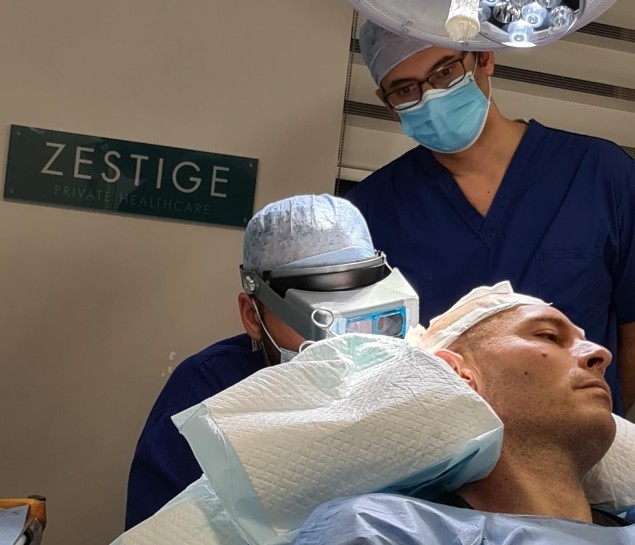 Undergoing a hair transplant is a major step towards restoring confidence and achieving a fuller head of hair. While the surgeon’s expertise is crucial, post-operative care and the recovery environment play an equally important role. One often overlooked factor is maintaining the right room temperature and humidity. A well-regulated environment promotes healing, prevents complications, and ensures the transplanted grafts thrive. Whether treated at a top clinic or at home, understanding these factors is vital. This article explores the ideal recovery conditions, recommended temperature and humidity levels, and best practices to support a smooth and successful hair transplant recovery.
Undergoing a hair transplant is a major step towards restoring confidence and achieving a fuller head of hair. While the surgeon’s expertise is crucial, post-operative care and the recovery environment play an equally important role. One often overlooked factor is maintaining the right room temperature and humidity. A well-regulated environment promotes healing, prevents complications, and ensures the transplanted grafts thrive. Whether treated at a top clinic or at home, understanding these factors is vital. This article explores the ideal recovery conditions, recommended temperature and humidity levels, and best practices to support a smooth and successful hair transplant recovery.
Why Room Conditions Matter in Hair Transplant Recovery
The period following a hair transplant is delicate. The scalp undergoes significant changes as it heals, and newly implanted grafts need optimal conditions to survive. Room temperature and humidity play a vital role in:
- Preventing excessive sweating: Sweating can irritate the scalp and increase the risk of infection.
- Reducing swelling and discomfort: A cool, comfortable environment helps minimise post-surgical swelling.
- Maintaining hydration levels: Proper humidity prevents scalp dryness, reducing itchiness and irritation.
- Enhancing graft survival: Stable environmental conditions support the integration of hair follicles into the scalp.
Given these factors, keeping your recovery space well-regulated is as important as following other post-operative care guidelines.
The Optimal Temperature for Hair Transplant Recovery
What Temperature is Best?
Experts recommend maintaining a room temperature between 18°C – 22°C during the recovery period. This range prevents excessive sweating while ensuring the patient remains comfortable.

The Risks of Extreme Temperatures
- Too Hot (25°C): High temperatures can cause excessive sweating, leading to infection risks, discomfort, and irritation at the transplant site.
- Too Cold (16°C): Cold environments may lead to poor blood circulation, slowing the healing process.
How to Maintain the Right Temperature
- Use an air conditioner or fan to cool the room if necessary but avoid direct airflow on the scalp.
- In winter, ensure warmth without overheating by using temperature-controlled heating systems.
- Wear lightweight, breathable clothing to maintain comfort without causing excessive sweating.
Maintaining this balance allows for a comfortable and conducive recovery space that promotes healing.
The Role of Humidity in Hair Transplant Recovery
What is the Ideal Humidity Level?
The recommended humidity level for post-hair transplant recovery is between 40% and 60%. This balance ensures the scalp remains hydrated without excess moisture that could encourage bacterial growth.
How High Humidity Affects Recovery
- Excessive moisture can create a breeding ground for bacteria, increasing infection risks.
- Can cause excessive sweating, leading to irritation and potential graft displacement.
- Can make the scalp feel excessively oily and uncomfortable.
How Low Humidity Affects Recovery
- Dry air can dehydrate the scalp, leading to flaking and itching.
- Can cause tightness and discomfort, potentially disrupting the healing process.
- Can make the newly transplanted hair follicles more vulnerable to damage.
How to Control Humidity in Your Recovery Room
- Use a humidifier to maintain moisture if the air is too dry, especially in winter.
- Use a dehumidifier if the air is too humid, particularly in tropical or summer months.
- Monitor humidity levels using a hygrometer to ensure they stay within the recommended range.
- Keep the room ventilated to prevent excessive moisture buildup.
By keeping humidity levels within the ideal range, you create an optimal healing environment that supports your hair transplant recovery timeline.
Air Quality and Ventilation: Ensuring a Healthy Recovery Space
The quality of air in your recovery space also impacts healing. Fresh, clean air prevents infections and promotes a comfortable recovery.
Best Practices for Air Quality Management
- Use an air purifier to remove dust, allergens, and pollutants.
- Avoid direct exposure to fans and air conditioning units, as strong airflow can dry out the scalp.
- Keep the room well-ventilated by opening windows periodically (if external conditions allow).
- Avoid using strong chemical air fresheners or sprays that could irritate the scalp.
- Change bed sheets and pillowcases frequently to maintain a hygienic environment.
A well-ventilated, clean space ensures that the scalp remains free from potential irritants and supports a smooth healing process.
Best Practices for Maintaining an Ideal Recovery Environment
Tips for Adjusting Room Conditions Based on the Season
- Summer: Use air conditioning but keep it at a moderate setting to avoid excessive dryness.
- Winter: Use a humidifier to combat dry indoor heating.
- Rainy Season: Use a dehumidifier to prevent excess moisture buildup.
How to Monitor and Maintain Comfort
- Keep a digital thermometer and hygrometer to track room conditions.
- Wear breathable cotton clothing to avoid excessive sweating.
- Use moisturising scalp sprays if needed (only as recommended by your surgeon).
- Avoid steam rooms, saunas, and hot showers during the recovery period.
By maintaining a stable environment, you can ensure the best possible outcome for your hair transplant.
The Link Between Comfort, Stress, and Recovery Speed
A comfortable environment not only promotes physical healing but also reduces stress, which plays a crucial role in the hair transplant recovery timeline.
How Stress Affects Recovery
- Increased stress can delay healing by affecting the immune system.
- Stress-induced sweating can create an uncomfortable and unhygienic scalp environment.
- Anxiety can lead to excessive touching or scratching of the scalp, which should be avoided.
Relaxation Techniques for Better Recovery
- Practice deep breathing and meditation to manage stress.
- Listen to soothing music to create a calming atmosphere.
- Ensure quality sleep by maintaining a comfortable, cool bedroom.
- Engage in light activities like reading or watching movies to keep the mind relaxed.
A stress-free environment contributes significantly to faster and more effective healing.

Expert Recommendations from Hair Transplant Clinic
Leading clinics, such as Harley Street Hair Transplant Clinic, emphasise the importance of post-operative care, including maintaining the right room conditions. Their experts recommend:
- Keeping a close eye on temperature and humidity to prevent complications.
- Following all post-operative care instructions regarding scalp hygiene.
- Consulting your surgeon if you notice excessive discomfort, swelling, or irritation.
By following expert guidance, you increase your chances of a successful hair transplant outcome.
Conclusion
The recovery environment plays a crucial role in ensuring the success of a hair transplant. By maintaining an ideal room temperature (18°C – 22°C) and humidity (40% – 60%), you create a space that promotes healing, reduces complications, and enhances comfort. Proper air quality, ventilation, and stress management further contribute to a smooth hair transplant recovery timeline.
If you’re considering a hair transplant or are currently in recovery, ensuring these factors are in place will help you achieve the best results. For expert advice and professional post-operative care, clinics like Harley Street Hair Transplant Clinic can provide the guidance needed for a successful journey.
For trusted healthcare solutions and expert consultations, Zestige Private Healthcare is here to support you on your wellness journey.


